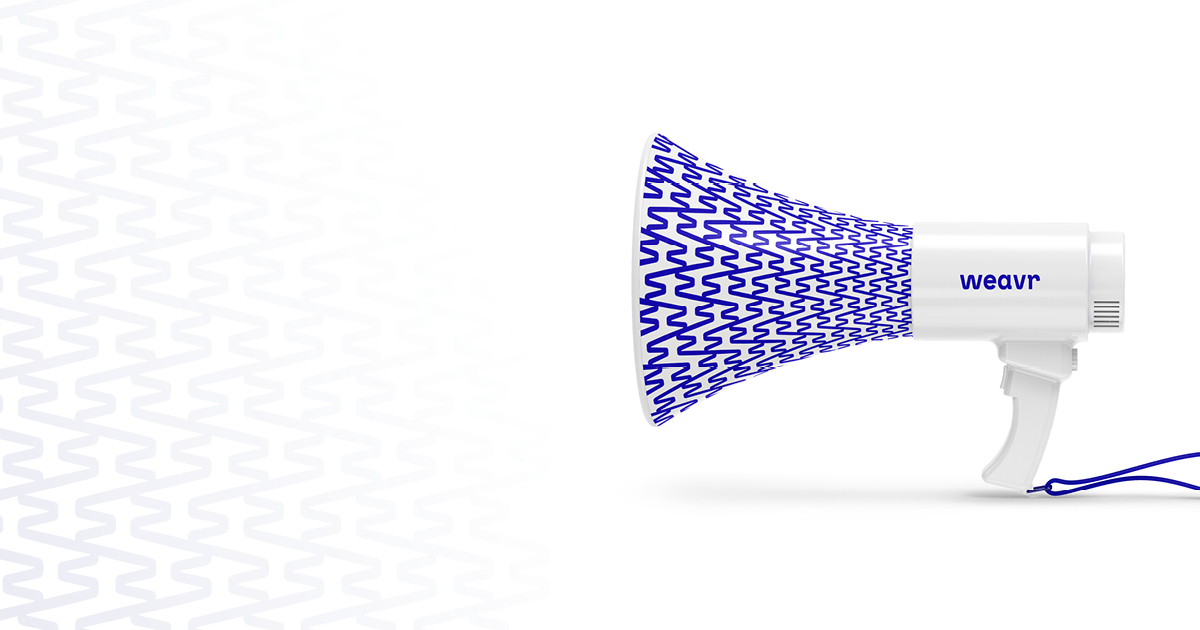This September we’ve got a couple of important updates to share, and both make it easier to get started with embedded finance, build adoption among your application users, and then scale rapidly. Read on for details:
🧮 SaaS pricing update
We’ve updated the subscription and transaction fees in Weavr’s platform to separate out two billing schemes designed for different stages of your embedded finance path:
- Pro: designed to make life easier and cut costs for innovators who are just getting started with embedded finance
- Scale: providing better unit economics where financial features in your app are already up and running with a track record of transaction volume
Innovators getting started with Weavr on the Pro pricing scheme benefit from low monthly minimum charges, a 15-month contract, and the option to switch into the Scale pricing whenever your transaction volume means it makes sense.
Find out details of Weavr pricing here.
Highlights where Weavr’s pricing will prove competitive versus alternative options include:
- Pricing includes access to all financial instruments in the platform – as well as business solution features including active fraud monitoring, setup assistance, and ongoing technical support
- Free use of sandbox and simulator for prototyping
- Free production API calls (subject to reasonable use policy)
- Free creation of cash-holding wallet accounts and low costs of applying IBANs to these accounts
- Low monthly costs per corporate and consumer account holder and per virtual card created for users
- Innovators can earn revenue back from the interchange on commercial debit cards – with cashback rates on Pro of up to 0.9% depending on volume and purchase/acquiring conditions
Quick summaryFor those new to Weavr: when you are starting out with embedded finance, you can now pick our Pro pricing, which has low minimum committed monthly costs while still including the full set of solution elements you need to get up and running fast. If you’ve already implemented embedded finance features – e.g. by developing your own solution with a BaaS provider, by bringing your transaction volume estimates to Weavr – we’ll help you calculate whether Pro or Scale pricing would be more favourable for your next move. For existing Weavr innovators: you don’t need to do anything, as your account manager will discuss billing changes ahead of your next renewal.
|
📲 Making it easier to add payment cards to mobile wallets
Weavr allows you to generate Mastercard debit cards for your application’s users, under your branding and user experience context. These can be virtual or physical (plastic) cards, and can be general-use or limited by certain conditions, including single-use, pre-paid, and other configurations you may choose.
All of these embedded finance payment cards can be loaded into Apple Pay and Google Wallet – but until now, doing so was a bit of a fiddly operation for users, as they had to copy-paste card details and switch between your app and the mobile wallet app.
Now, Weavr can help you set up a simple “add to Apple Pay” or “add to Google Wallet” (or “add to G Pay”) button inside your app, which just takes a few taps for your user to complete. This is known as in-app push provisioning. In a simplified UX flow, a user will be deep linked into their mobile wallet with all the details of the card tokenised. They can then agree to any terms and settings, and their card is securely saved for them to use from the wallet app without having to input their card number or pull out their physical card when making payments via wallet.
Once your user has their card(s) in their mobile wallet, they can use it securely to pay for both online purchases (including subscriptions) and in-person contactless payments. The mobile wallets only store a token representing the payment card, so merchants don’t see or use the original payment card number, making this an excellent combination of security and convenience for your users. As a digital innovator, you are able to gain useful insights on the usage of financial features in your app via aggregated analytics and cardholder drilldown that Weavr provides out of the box in portal dashboards: and this includes data about card transactions and whether the transactions occurred through a mobile wallet.
Not sure if your users need this? Check out these stats:
- Nearly a third of all payments in the UK are now contactless, a rise of 36% compared with transaction volumes in 2020
- 64% of consumers paying contactlessly prefer to use their mobile phones to pay
- By 2025 digital wallet use will account for just over half (52.5%) of ecommerce transaction value worldwide, versus 48.6% in 2021
- By 2025, smartphone penetration is estimated to reach 80% globally: with more than half of consumers projected to be using a mobile wallet by 2025, this equates to an increase of 2.7 to 4.8 billion wallets in use globally in the next four years
So the real question is – will the payment card your customers load into their mobile wallet be the one from your app, or a competitor’s?
Quick summaryWith push provisioning for mobile wallets, you can make it much easier for your users to add their embedded payment cards into Apple Pay and Google Wallet, and use these cards wherever they want (subject to the usage conditions you and the account holders have set up, of course). Setup for manual provisioning of cards in mobile wallets is outlined in Weavr pricing for commercial and consumer-focused applications, and please enquire with your account manager when you are considering the upgrade to in-app push provisioning. If you’re already live with Weavr, talk to your account manager about enabling in-app provisioning for Google and Apple mobile wallets. |
📃 And more useful updates…
Recent product releases have made the following new features available to all innovators:
- Mobile SDK support for embeddable UI elements in React Native and Flutter
- Users sending a bank transfer can add a short description (SEPA and SWIFT = <=35 characters; Faster Payments = <=18 characters), which can be used for matching or other purposes by the receiving bank and beneficiary; statements and transaction reports can now include this outgoing wire transfer (OWT) description
- A new webhook endpoint has been added for manual transaction adjustments: if such an adjustment is done, a webhook notification message will be automatically triggered, including the ID, timestamp of the transaction, target instrument, as well as the relevant adjustment details, such as balance value
Keep an eye on regular fixes and enhancements to the Weavr API via our changelog in the Documentation site.
🎁 Coming soon
Stay tuned to Weavr product updates for more good stuff in the pipeline:
- Universal login to give consumers a frictionless alternative to conventional username/password authentication, e.g. by using their Google, Microsoft, or Twitter account to log in to the financial zone of your app
- Enterprise login for corporate embedded finance app users, including Single Sign On (SSO) and other business connections (Active Directory, LDAP, ADFS, SAML)
- A new optional setting to require your users’ card payment authorisations to go through a parallel second layer of checks that you define in your own application, in addition to configured defaults in Weavr: this feature will be welcomed by innovators wishing to apply additional fine-grained logic in spend controls on debit cards
Ideas and feedback: send us your questions about embedded finance or anything in the Weavr solution: we’d love to hear from you. Contact us here.


